Outdoor Winter Safety Tips Everyone Should Know
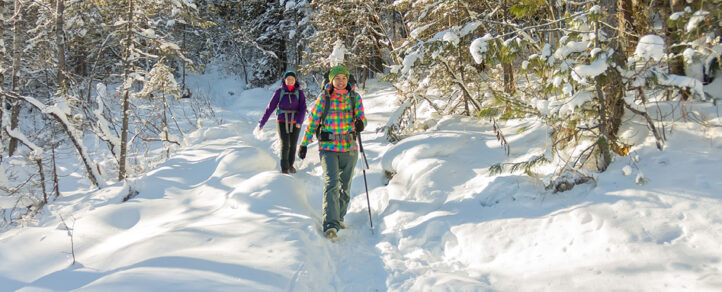
Written by: Sandra Riches, Executive Director, BC ADVENTURESMART
This winter when you’re planning your outdoor excursions close to home, AdventureSmart reminds us to always follow the Three Ts:
Trip planning
Training
Taking the essentials
Applying these safety tips can help reduce risk and ensure your winter outing is safe, responsible and most of all, enjoyable! Check out BC AdventureSmart’s 3 Ts video.
Trip Planning
To increase your chances of having an enjoyable and safe outdoor adventure, trip planning is vital. Planning your outing ensures you know exactly where you are going, what the conditions and terrain are like, as well as the weather conditions you can expect on the day. Leaving your trip plan with friends or family will also allow authorities to quickly find you if anything does go wrong.
When you’re trip planning, always do the following:
LEARN MORE ABOUT TRIP PLANNING– Plan your travel route
– Know the terrain and conditions
– Check the weather
– Fill out a trip plan
Training
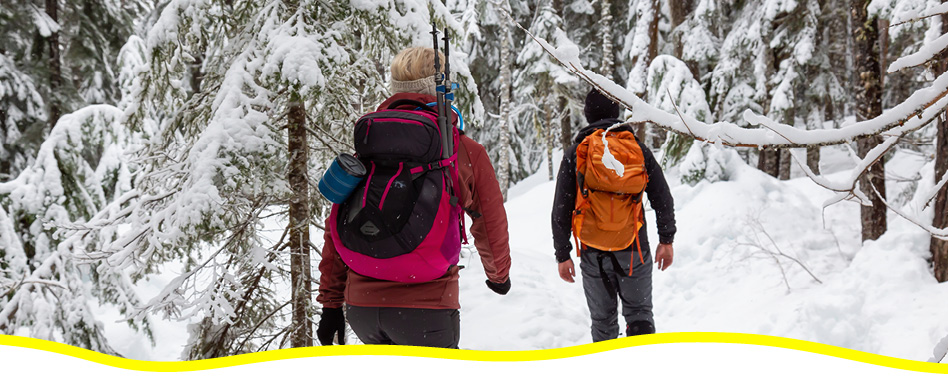
Preparing for a recreational winter outing involves assessing your current knowledge, skills and ability, and understanding your limits.
Winter conditions, like heavy snow and ice, can require extra preparation (such as this Snow Safety webinar), as well as more experience, so when planning your winter exploration, always do the following:
– Obtain the knowledge and skills you need before heading out
– Know and stay within your limits
For example, if you’re new to snowshoeing, begin close to home, or consider taking a tutorial from an expert. Build up your endurance on short trails before attempting longer trails or more challenging terrain. This library of outdoor education is offered by BC AdventureSmart.
If you want to venture farther, into provincial park trails or backcountry destinations, familiarize yourself with Avalanche Canada’s avalanche safety tips, or take an Avalanche Skills Training Course (AST) to be aware of the risks, know how to stay safe, and learn how to act in the event of an avalanche.
LEARN MORE ABOUT TRAININGTaking the Essentials
No matter how well you know the terrain, or how experienced you are in an activity, always carry the essentials and know how to use them. These are basic survival items you should have in any outdoor situation!
The essentials are:
– Flashlight and/or headlamp
– Fire-making kit
– Signalling device (i.e., whistle)
– Extra food and water
– Extra clothing (i.e., gloves/mittens with heat warmers in winter)
– Navigation/communication devices
– First aid kit
– Emergency blanket/shelter
– Pocket knife
– Sun protection
– Seasonal and sport-specific gear (i.e., anti-slip crampons, poles, avalanche transceiver shovel, probe)
Ultimately, sound judgement and knowing when to turn around and save it for another day are your most important backcountry survival skills
LEARN MORE ABOUT THE ESSENTIALSGet outside, safely and responsibly!
Find more outdoor winter safety tips at AdventureSmart.ca and British Columbia AdventureSmart/Search and Rescue.
About AdventureSmart
AdventureSmart helps reduce the number and severity of Search & Rescue incidents in BC. A national prevention program focused on educating Canadians and visitors to Canada who participate in outdoor activities, AdventureSmart collaborates with partners to spread their message as widely as possible
Twitter: @BCAdvSmart
Instagram: @BCAdvSmart
Facebook: @BCAdvSmart


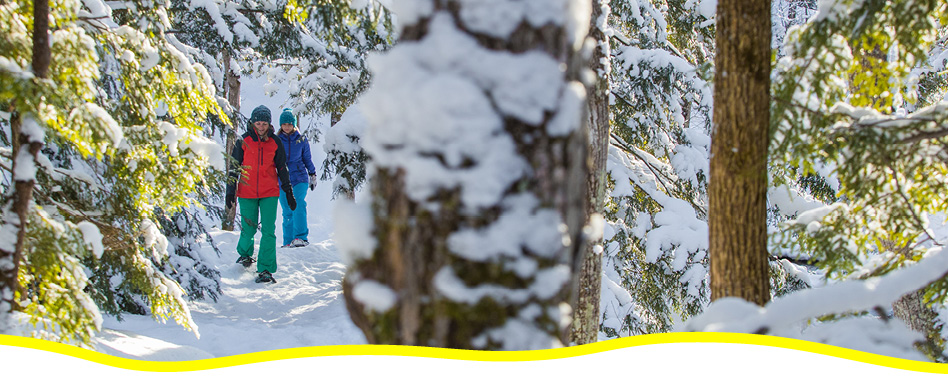

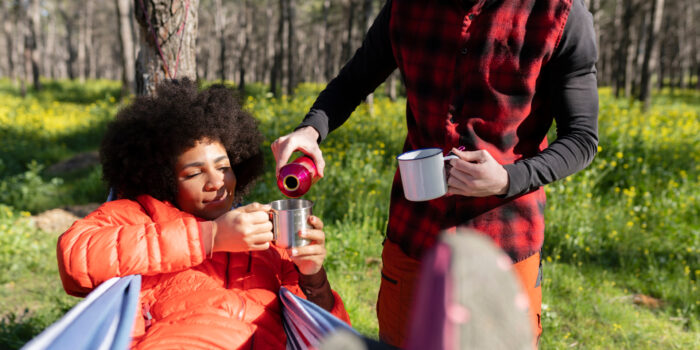



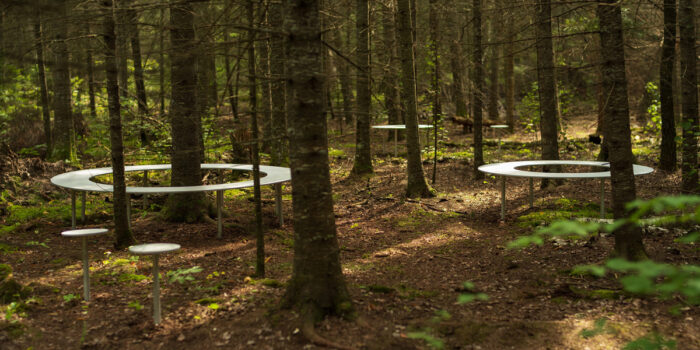
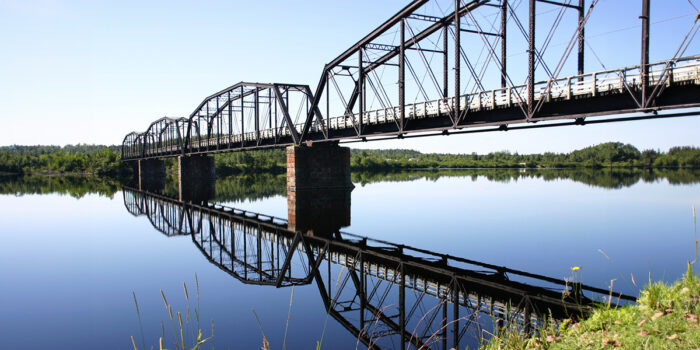


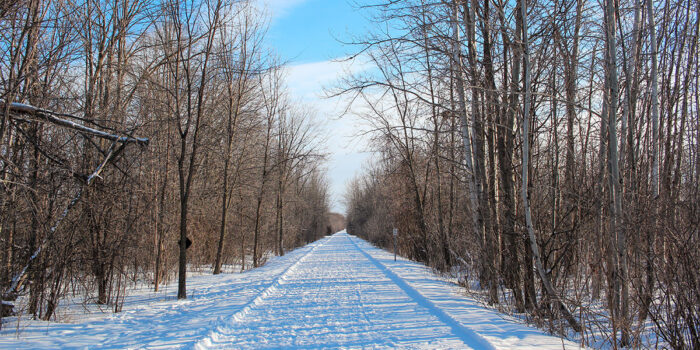

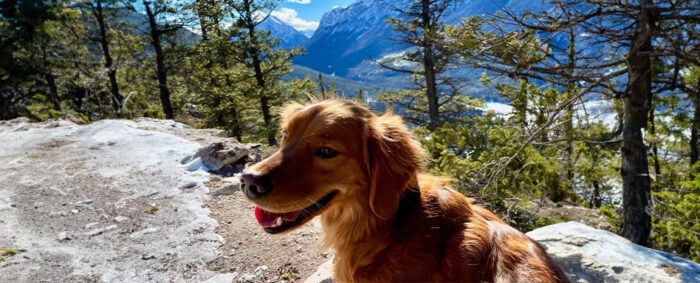
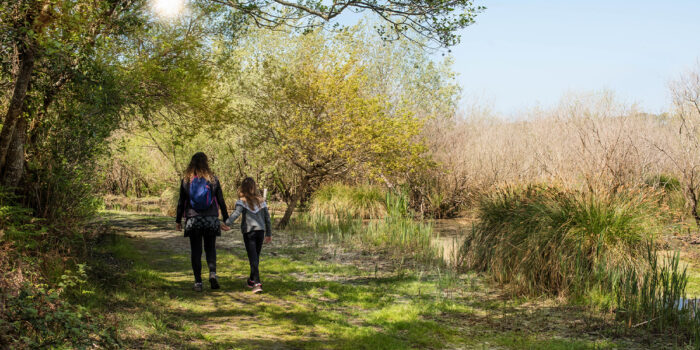
![[:en]Park Canada[:] Company Logo](https://tctrail.ca/wp-content/uploads/2021/05/LOGO_Partnership_Black_EN.png)



